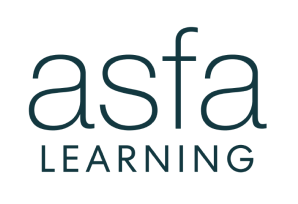Long term projections are by their very nature challenging to prepare. They are very dependent on the assumptions that are made. Dealing with future risks and uncertainties is also crucial.
In the recent Productivity Commission Draft Report Superannuation: Assessing Efficiency and Competitiveness there is considerable use of projections. A number of the projections and the cameos they support are key to the draft recommendations that are made.
While the cameos and associated recommendations have been extensively canvassed in the media and in public debate, to date public discussion of the assumptions used and the plausibility of the projections has been quite limited.
This is perhaps unfortunate as some of the assumptions deserve more detailed discussion and consideration. For instance, Cameo 2.1 in the draft report contains projections based on 6 per cent real gross rate of return over a 46 year period. A real rate of return of this amount equates to an annual nominal rate of return of around 8.5 per cent over the period. For a person aged 21 and on a starting salary of $50,000 this is projected to lead to a retirement balance of $1.1 million in today’s dollars. With a 5 per cent real return the lump sum projected is $833,000.
The small difference in investment returns leads to a big difference in absolute dollars but there is a question about how realistic those various big numbers are.
If correct, the numbers would suggest that on current settings the compulsory superannuation system will be remarkably successful in generating very large retirement savings even for individuals on less than average or even median earnings. The projections do not even seem to include moving to a 12 per cent superannuation guarantee (SG) rate.
In Cameo 2.2 the numbers are even bigger, with the projections showing a median fund in what is described as top quartile of performers delivering $1.2 million at retirement for a person currently aged 21 on $50,000. Presumably the best performing fund is assumed to produce an even bigger figure at retirement.
Big numbers can be persuasive but it is important that they are soundly based.
Other more traditional projections give far lower numbers and relatively modest differences in today’s dollars between the different options and outcomes described in the report. For instance, the standard assumptions in the ASIC MoneySmart calculators give much lower figures, in the sub $300,000 region for the cases above.
Regulators also tend to be keen on the use of appropriate disclaimers. One of the usual disclaimers attached to savings projections is that past investment performance is not necessarily a guide to future investment performance.
There are a number of reasons for such a cautionary note. Investment returns vary over economic and financial cycles, and reversion to mean returns in the long run is something that has been observed in investment markets and for superannuation funds in Australia. This is relevant to whether a top ten fund list makes a lot of sense.
The Productivity Commission report’s assumption of 46 years uninterrupted paid employment and steady career progression may also not be representative for many in the labour force. It may not even be typical these days for a public servant. And for many women time out of the paid labour force for family reasons and periods of part-time work are more the norm.
Other figures in the draft report also deserve a good look. The incidence of multiple accounts—and their cost to the fund members who have such accounts—are important in regard to various policy changes canvassed in the report.
The average account numbers in the draft report appear to be based on the assumption that only current members of the paid labour force should have a superannuation account, leaving out those retired or not currently in paid work. As well, the Productivity Commission seems to assume that many of those in Eligible Rollover Funds are paying average fees applying to other funds and have insurance costs as well.
There are a number of aspects of current superannuation arrangements where changes could lead to better outcomes for fund members. Having a strong evidence base and soundly-based projections will be crucial for developing reforms that deliver enhanced outcomes for fund members.









